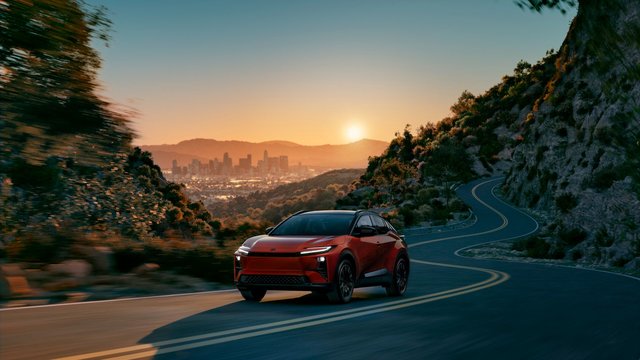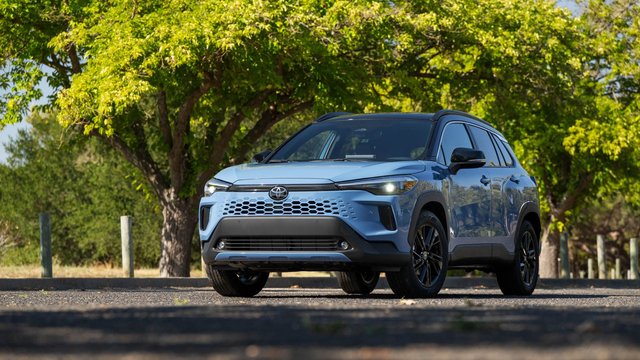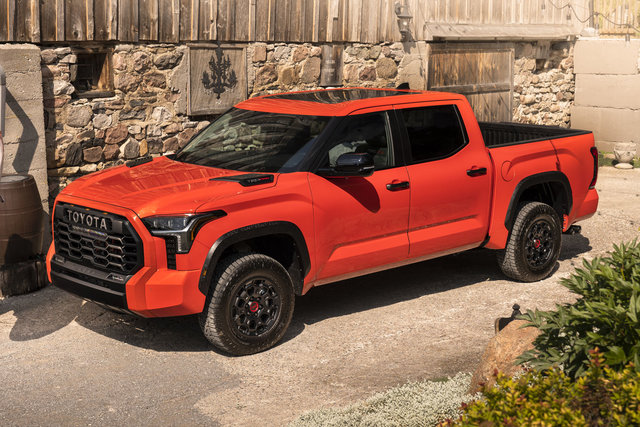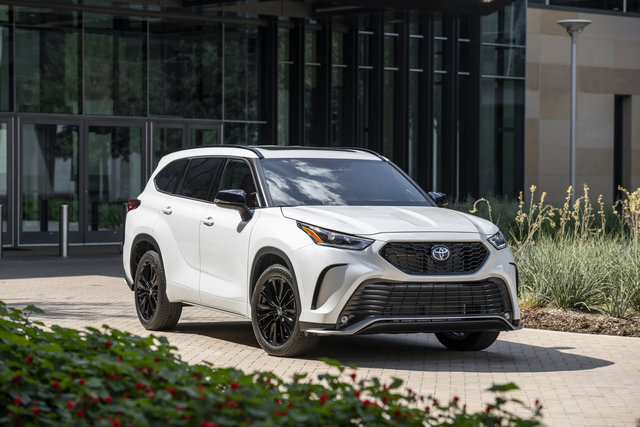If you're shopping for an affordable AWD compact SUV in Belleville, you've likely noticed RAV4...

The 2026 Toyota C-HR Battery Electric Vehicle arrives soon with a manufacturer-estimated 500 km of all-electric range on the front-wheel drive model, addressing a key concern for many drivers across Eastern Ontario. For Belleville-area buyers weighing the shift to electric, this compact crossover offers practical range for daily commutes, weekend getaways, and everything in between. Paired with North American Charging Standard (NACS) port access and DC fast-charging capability, the C-HR FWD brings electric driving within reach for drivers who want dependable range without compromise.
This article breaks down how the C-HR's range, charging infrastructure, and design address the real-world needs of Ontario drivers, from Highway 401 commuters to cottage-bound families.
How 500 km of Range Changes the EV Equation
Range anxiety remains one of the most common barriers to electric vehicle adoption. The 2026 C-HR FWD directly addresses this with its 500 km manufacturer-estimated all-electric range, powered by a 77-kWh lithium-ion battery. To put that in perspective, drivers can travel from Belleville to Toronto and back with range to spare, or make the trip to Ottawa without needing to charge along the way.
The C-HR's range estimate reflects real-world driving conditions, including weather variability. Ontario drivers know that winter temperatures can impact battery performance. The C-HR includes a battery pre-conditioning function that brings the battery to an optimal temperature for DC fast charging, which can enable faster charging in colder climates. This function can be activated manually or automatically when you set your destination to a fast-charging station using the navigation system.
With this range capability, the C-HR suits a variety of driving patterns common to the Quinte region:
- Daily commutes: Belleville to Kingston (110 km round trip) or Belleville to Peterborough (160 km round trip) are well within range.
- Weekend trips: Prince Edward County wine tours, camping in Bon Echo Provincial Park, or visiting family in the Greater Toronto Area become straightforward without charging stops.
- Multi-day flexibility: Charge once or twice a week for typical local driving, rather than daily top-ups.
NACS Charging Access Across Ontario
The C-HR is equipped with a North American Charging Standard (NACS) port, giving drivers access to thousands of DC fast-charging stations across Canada. This standardized charging system simplifies public charging by reducing the need for multiple adapters or memberships, making it easier to find compatible stations on road trips or during errands.
In Eastern Ontario, NACS-compatible charging infrastructure continues to expand. Drivers can find stations along Highway 401 corridors, in downtown Belleville, and throughout Kingston and surrounding communities. The Toyota App provides an easy-to-use map to locate charging stations near you or along your route, helping you plan trips with confidence.
30-Minute DC Fast-Charging Capability
When you do need to charge on the go, the C-HR's DC fast-charging capability can recharge the battery from 10% to 80% in around 30 minutes under ideal conditions. This charging speed makes highway travel more practical. A quick stop at a fast-charging station during a coffee break or meal is often enough to add significant range.
The C-HR also supports Level 1 and Level 2 AC charging for home or workplace use, with an 11-kW on-board AC charger and a dual-voltage charging cable included. Level 2 home charging can fully replenish the battery overnight, allowing drivers to start each day with a full charge.
|
Charging Comparison |
Level 1 (120V) |
Level 2 (240V) |
DC Fast-Charging |
|---|---|---|---|
|
Typical Use Case |
Emergency or trickle charging |
Home/workplace overnight charging |
Road trips, quick top-ups |
|
Charging Speed |
Slowest (8–12 hours for partial charge) |
Moderate (full charge in 6–8 hours) |
Fastest (10–80% in ~30 min) |
|
Best For |
Occasional use, backup |
Daily charging routine |
Highway travel, time-sensitive needs |
Design and Functionality for Everyday Life
Beyond range and charging, the C-HR is built to function as a practical daily driver. Its compact crossover proportions (4,520 mm length, 1,870 mm width, 1,595 mm height) make it easy to navigate Belleville streets and parking lots, while providing generous interior space.
Inside, the C-HR offers 720 litres of cargo space behind the rear seats with 60/40-fold flat rear seating for added versatility. The cabin includes two wireless Qi chargers, three USB-Type C ports, and rear cabin air conditioning controls. A 14-inch touchscreen with the Toyota Multimedia system provides wireless Apple CarPlay and Android Auto compatibility, along with dual Bluetooth phone connectivity.
The C-HR's battery is mounted flat under the floor, creating a low centre of gravity that improves handling and stability. This design also maximizes cabin and cargo space without compromising the vehicle's crossover profile.
Safety and Driver Assistance Features
The C-HR comes standard with Toyota Safety Sense 3.0, including:
- Pre-Collision System with Pedestrian Detection: Designed to detect vehicles, pedestrians, bicyclists, and motorcyclists, providing forward-collision warnings and automatic emergency braking support.
- Full-Speed Range Dynamic Radar Cruise Control: Adaptive cruise control that maintains a preset distance from the vehicle ahead.
- Lane Departure Alert with Steering Assist: Detects lane markings and provides warnings and gentle corrective steering when lane departure is detected.
- Lane Tracing Assist: Helps keep the vehicle centred in the lane while cruise control is active.
- Proactive Driving Assist: Uses camera and radar to provide gentle braking or steering support in specific driving situations.
Additional driver assistance features include Blind Spot Monitor with Rear Cross-Traffic Alert, Safe Exit Alert, and Front & Rear Parking Assist with Automatic Braking. These systems are designed to support awareness and decision-making, particularly useful on busy 401 corridors and in urban driving conditions.
Remote Connect and Charging Management
The C-HR includes a 3-year trial of Remote Connect through the Toyota App, which allows drivers to manage charging remotely. You can check charging status, start or stop charging when the vehicle is plugged in, and edit charging schedules. This feature is particularly useful for taking advantage of off-peak electricity rates at home or ensuring the battery is pre-conditioned before a winter drive.
Remote Connect also includes remote climate control, allowing you to pre-heat or pre-cool the cabin, activate seat heaters or ventilators, and schedule daily routines. This means you can step into a comfortable vehicle on cold Ontario mornings without draining the battery while driving.
Which Ontario Drivers Will Benefit Most?
The 2026 C-HR FWD is well-suited for:
- Commuters: Belleville to Kingston, Trenton, or Peterborough routes are easily covered with range to spare.
- Multi-car households: Families looking for an efficient second vehicle for local driving and occasional longer trips.
- Weekend explorers: Prince Edward County, Sandbanks Provincial Park, and cottage country trips remain accessible without range concerns.
- First-time EV buyers: The 500 km range reduces the learning curve associated with EV ownership, while NACS charging access simplifies public charging.
Experience the 2026 C-HR at Belleville Toyota
The 2026 Toyota C-HR BEV brings 500 km of manufacturer-estimated range, NACS charging access, and practical crossover versatility to drivers across Eastern Ontario. Contact us today at Belleville Toyota to learn more and find out when it will arrive.
Other Articles That May Interest You
Towing a boat to Sandbanks Provincial Park or hauling a camper through Picton's winding roads...
Advanced driver assistance systems have moved from luxury-car exclusives to standard equipment on...






